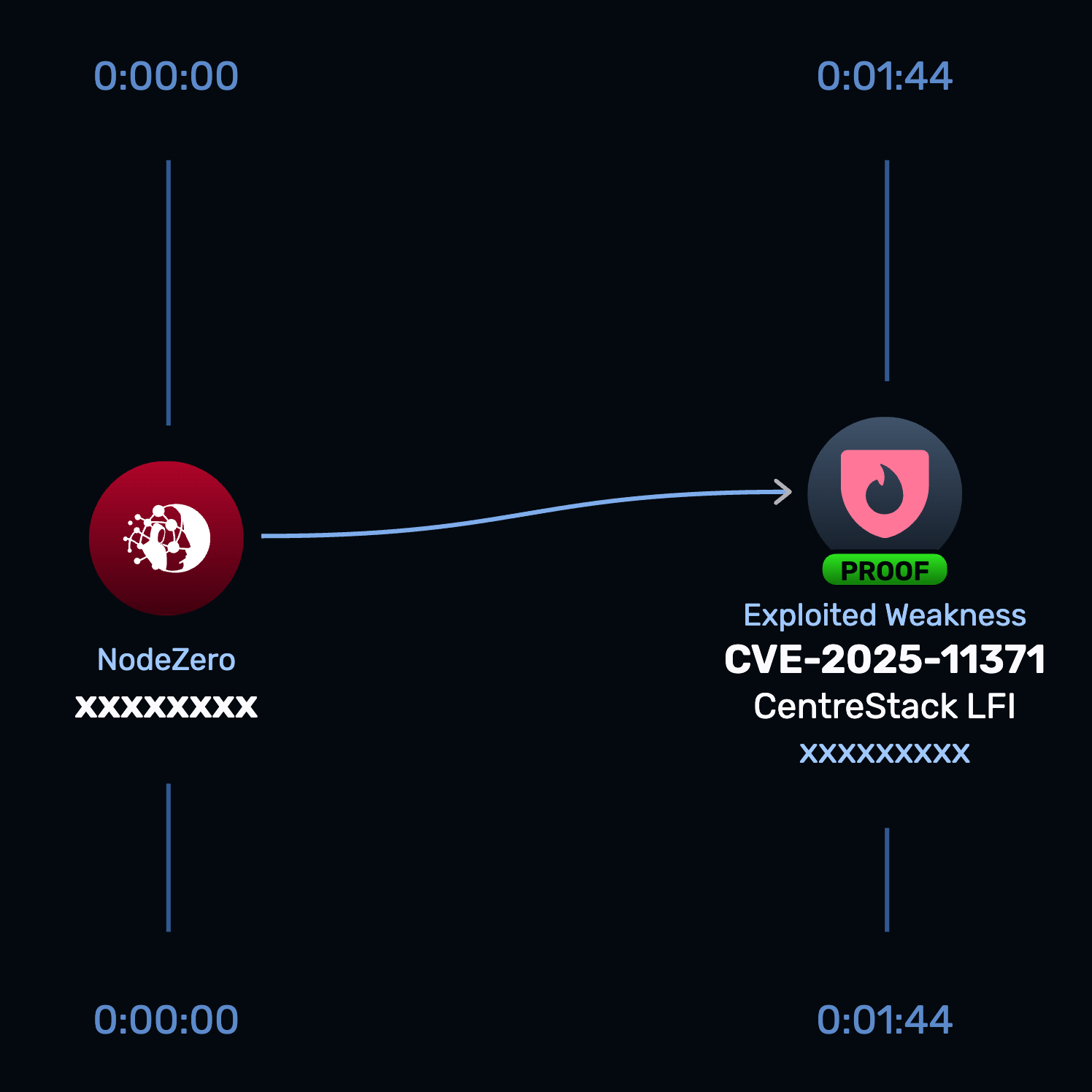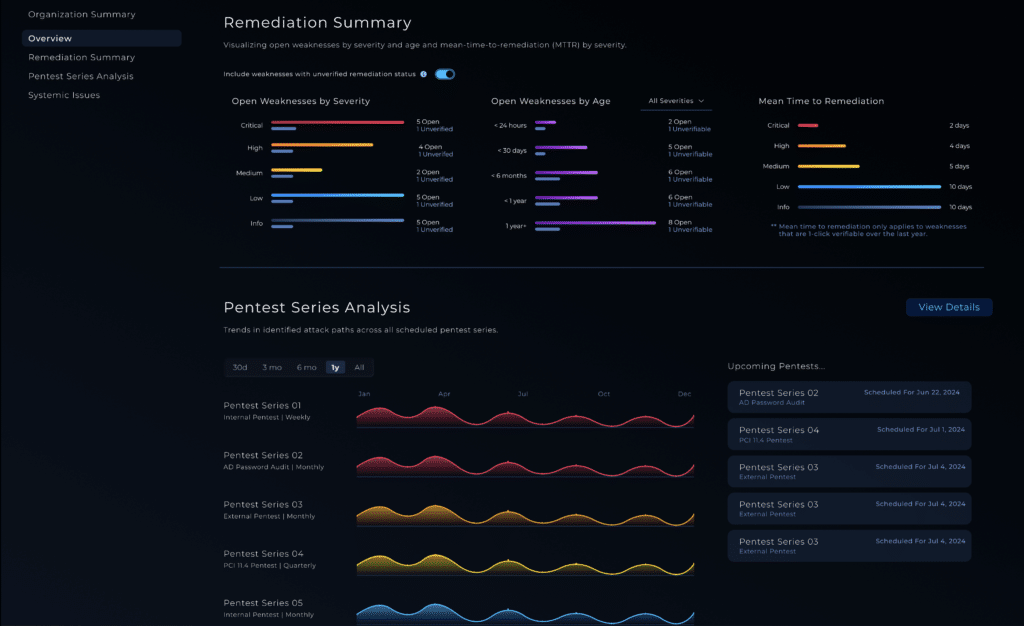CVE-2025-11371
Gladinet CentreStack / Triofox Local File Inclusion (LFI) | 0-Day Active Exploitation
CVE-2025-11371 is an unauthenticated local file inclusion (LFI) vulnerability in Gladinet CentreStack and Triofox that allows an attacker to access arbitrary files on the host system. An attacker can utilize this to obtain the instance’s machine key and forge signed data to achieve remote code execution. As of October 10, 2025, CVE-2025-11371 has no patch available, and there is evidence of active exploitation in the wild.
Technical Details
- The root issue is an unauthenticated LFI that allows arbitrary file reads from the web application.
- Retrieving the instance’s machine key enables attackers to craft valid
ViewStatepayloads that deserialize on the server and achieve remote code execution. - Huntress has observed in-the-wild exploitation.
NodeZero® Offensive Security Platform — Rapid Response
The Gladinet CentreStack Rapid Response test (CVE-2025-11371) released October 14, 2025, enables customers to safely verify whether CentreStack instances are exploitable to the LFI flaw (and therefore susceptible to full compromise) and to confirm mitigation.
- Run the Rapid Response test — run the Gladinet CentreStack — CVE-2025-11371 Rapid Response test from the customer portal to scan internet-facing and internal portal endpoints for the LFI exposure and RCE risk.
- Mitigate immediately — as there is no patch available, follow the recommended immediate workarounds to eliminate risk. Disable the
temphandler inUploadDownloadProxy\Web.config.- Note: Removing it blocks exploitation but does affect functionality.
- Rotate
machineKeyand patch related flaws — if you discoverWeb.configdisclosure or signs of exploitation, contain affected hosts, rotate themachineKey(following vendor guidance for clustered deployments). - Re-run the Rapid Response test — after mitigations, re-run the Gladinet CentreStack Rapid Response test to confirm the LFI path is no longer exploitable.
If the Rapid Response test confirms exploitability, collect forensic artifacts (web logs showing Web.config retrieval, process trees showing suspicious child processes from w3wp.exe, and the original malicious requests), isolate affected systems, and open an incident with your IR team.
Indicators of Compromise (IOCs) — hunting guidance
Find and fix exploitable CentreStack instances with Rapid Response

Affected Versions & Patch
- CVE-2025-11371 (LFI): all versions from 16.4.10315.56368 and prior are affected. No current patch available.
Recommended actions (summary)
- Inventory & scope — identify all web portal instances (internet-facing and internal admin portals).
- If exploitable, apply workaround: remove / disable the
temphandler in theUploadDownloadProxylocated atC:\Program Files (x86)\Gladinet Cloud Enterprise\UploadDownloadProxy\Web.config. This will affect functionality but mitigate exploitability risk. - Contain & investigate — isolate affected hosts, collect web logs and process trees, check for
Web.configdisclosure and suspiciousViewStatepayloads. - Rotate
machineKeyonly after containment and patching — coordinate rotation across clustered nodes per vendor guidance. Disclosure of themachineKeyinvalidatesViewStateprotections. - Patch — apply Gladinet vendor updates when published and re-run Rapid Response tests to confirm remediation.
References
🔗 Huntress

